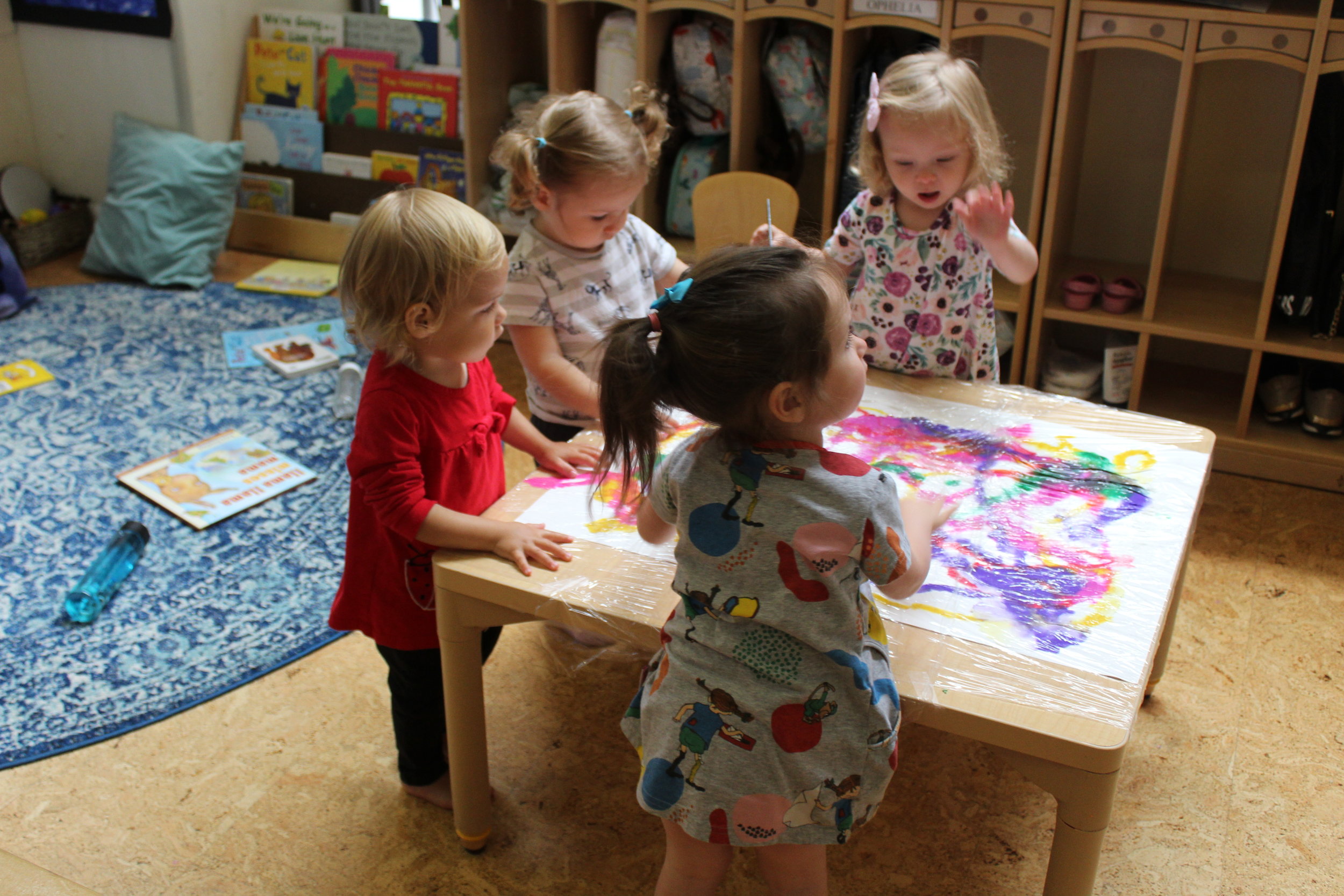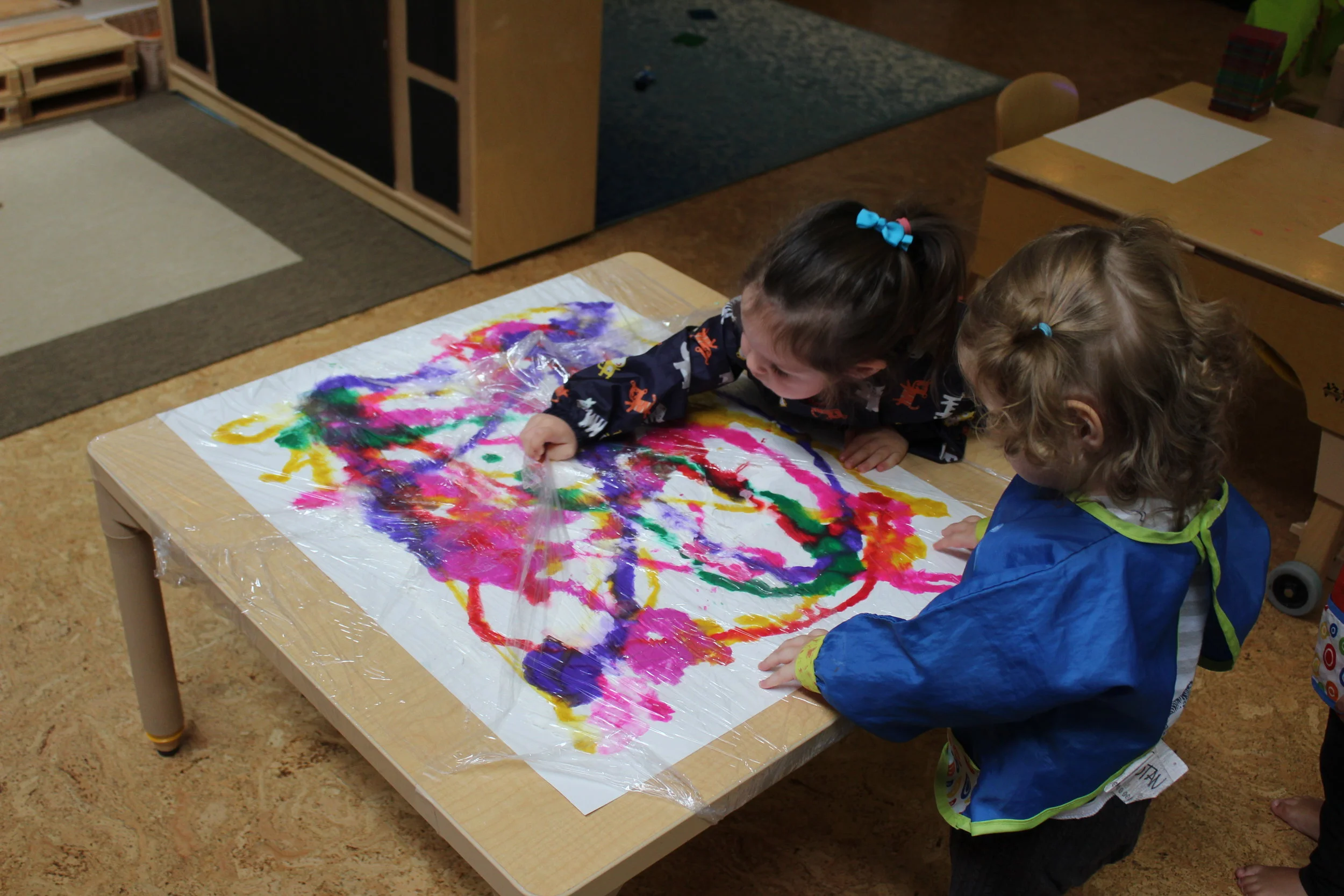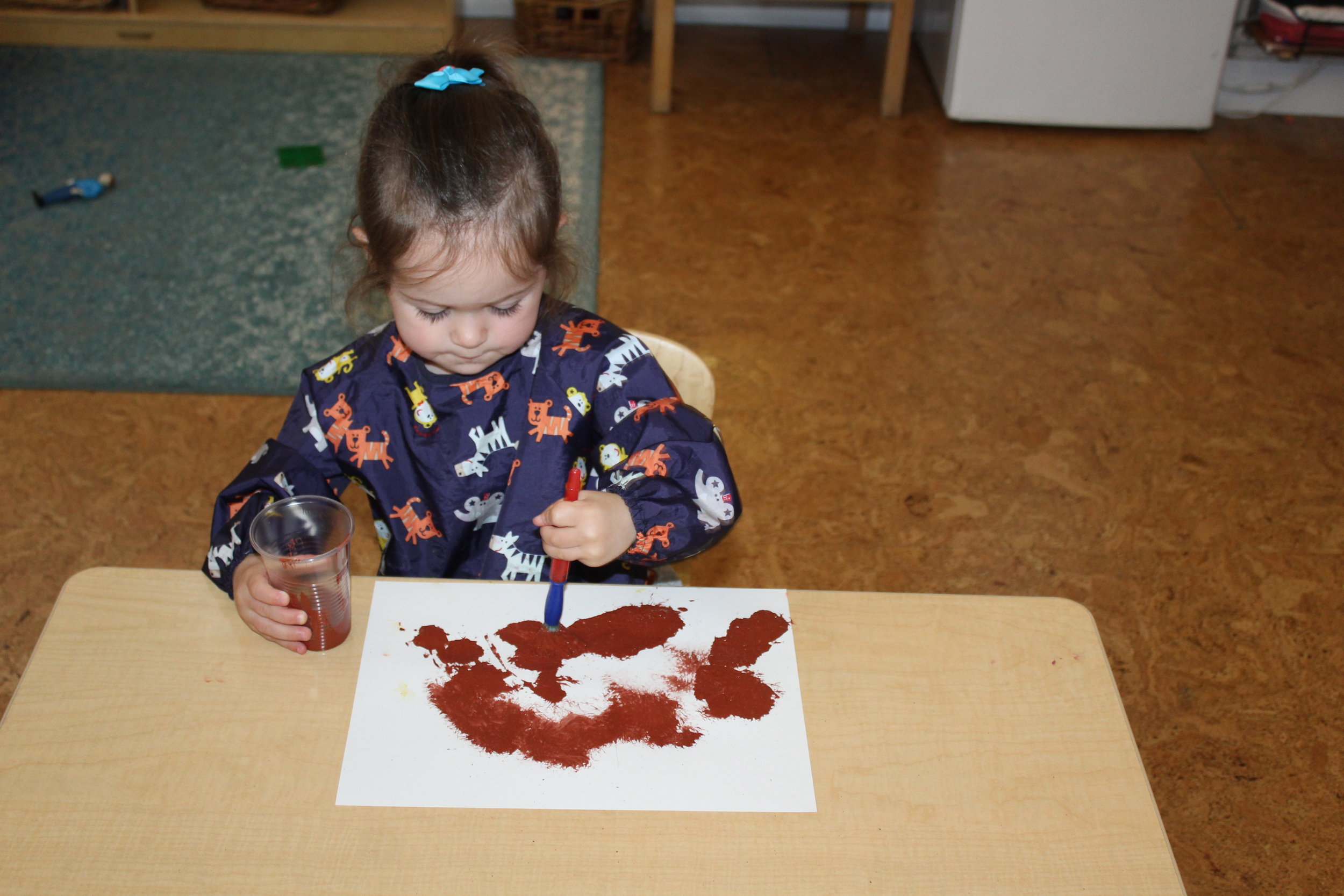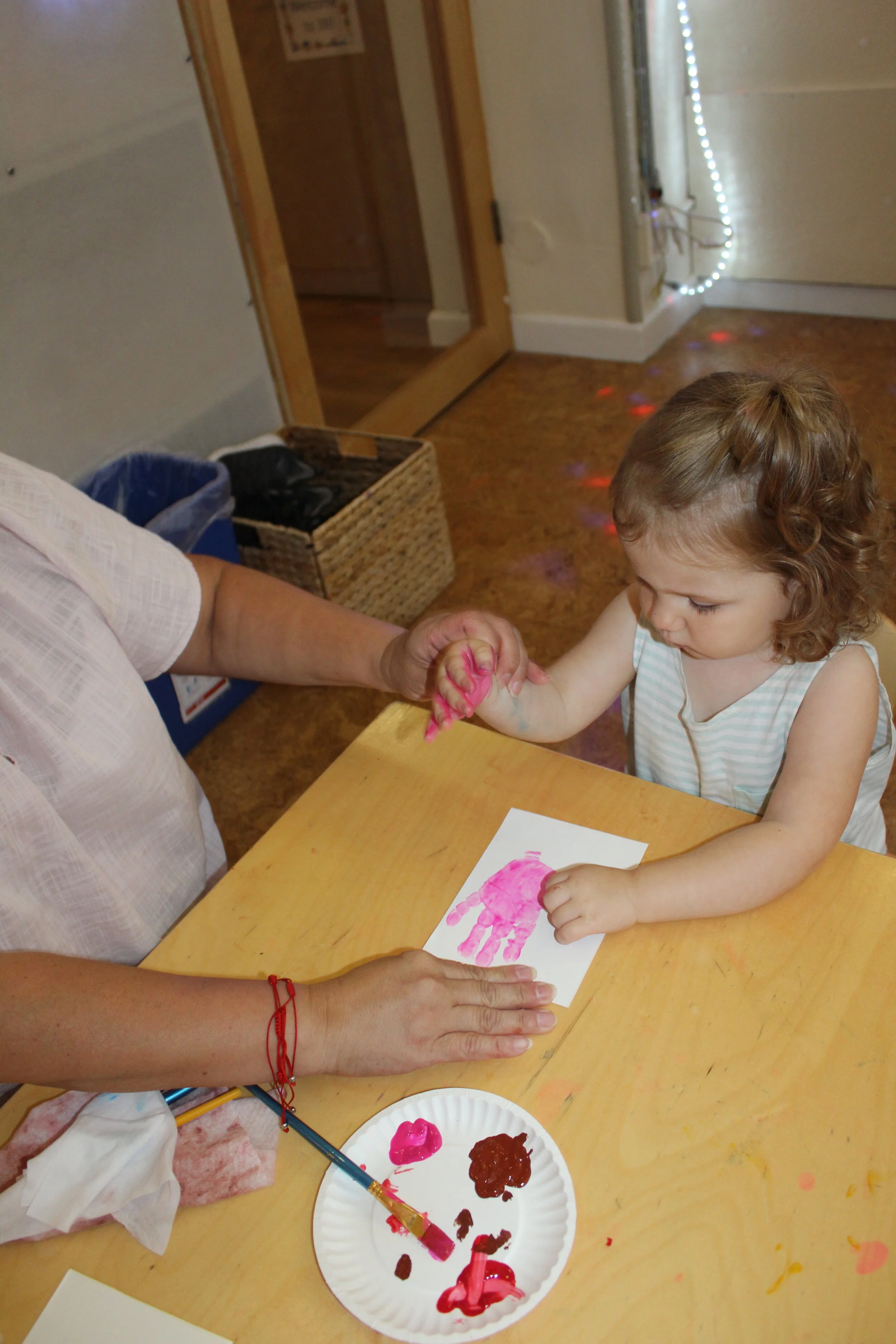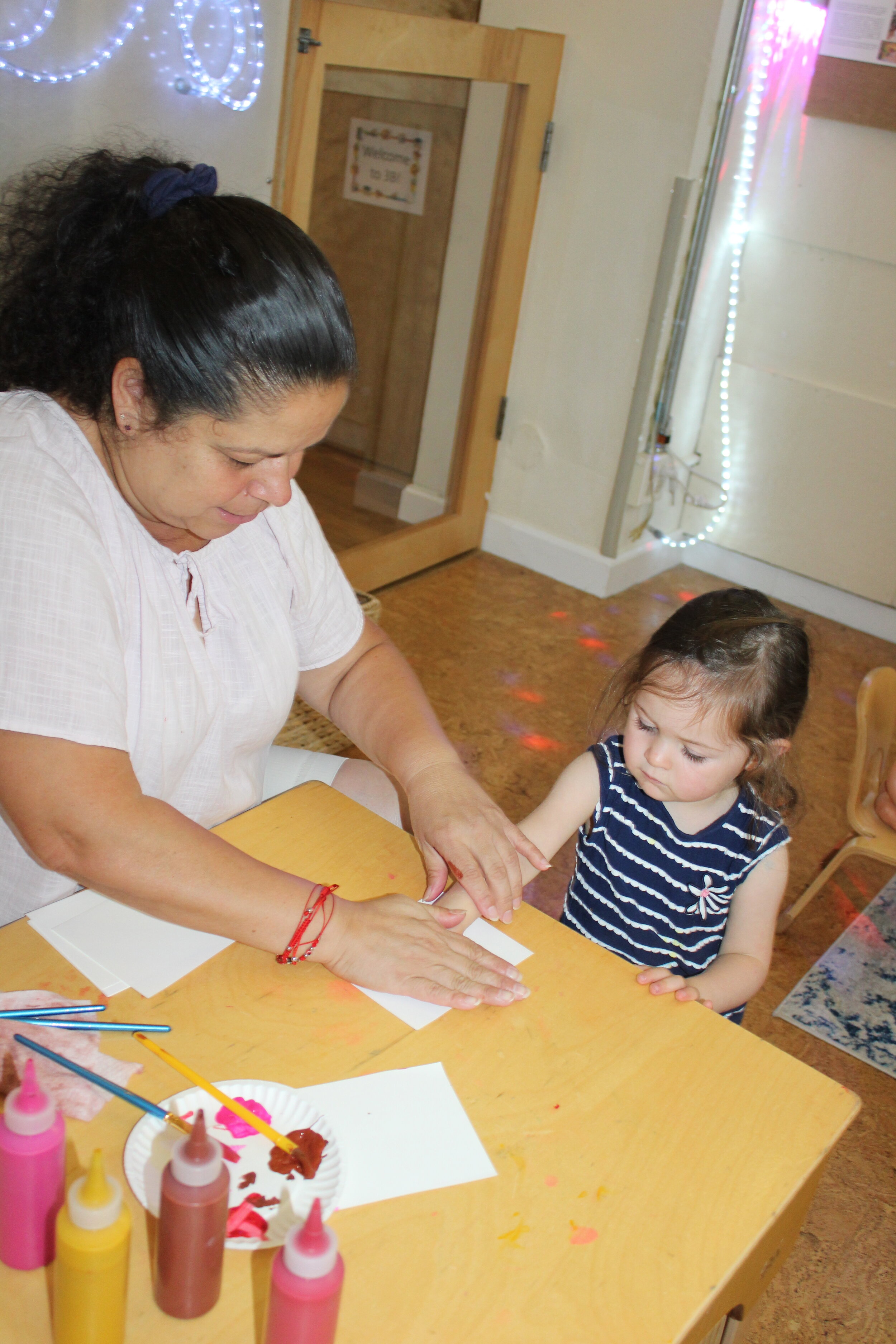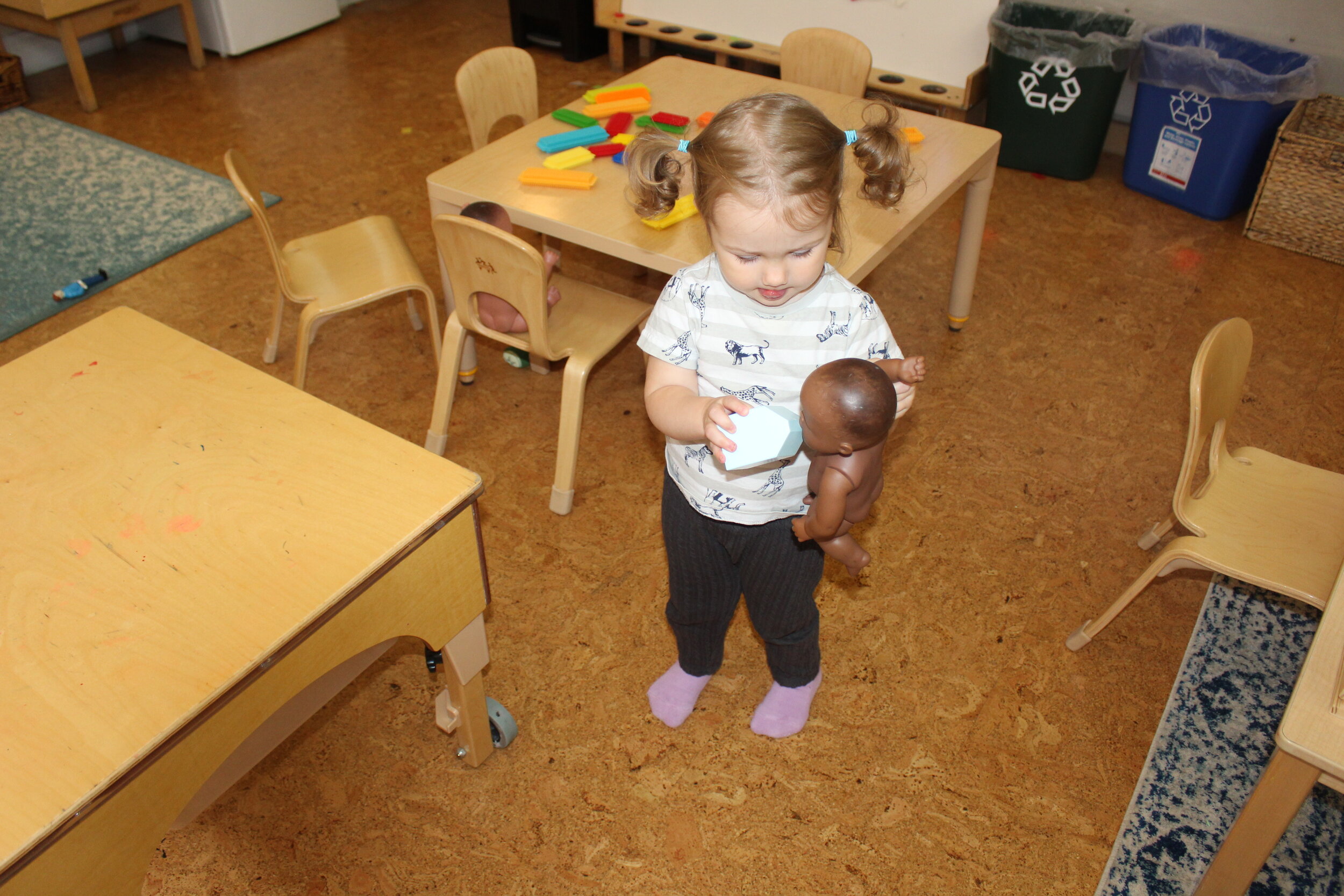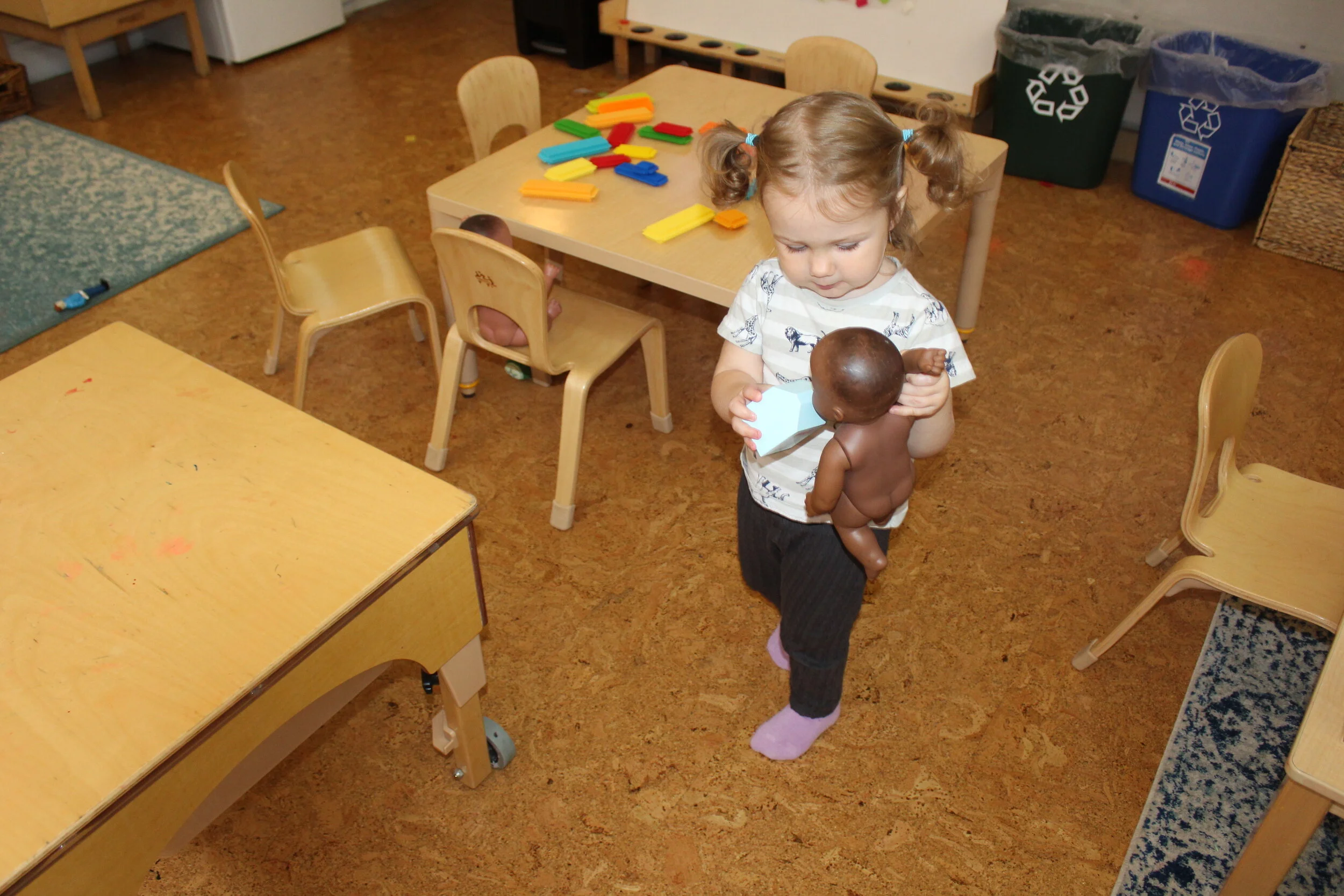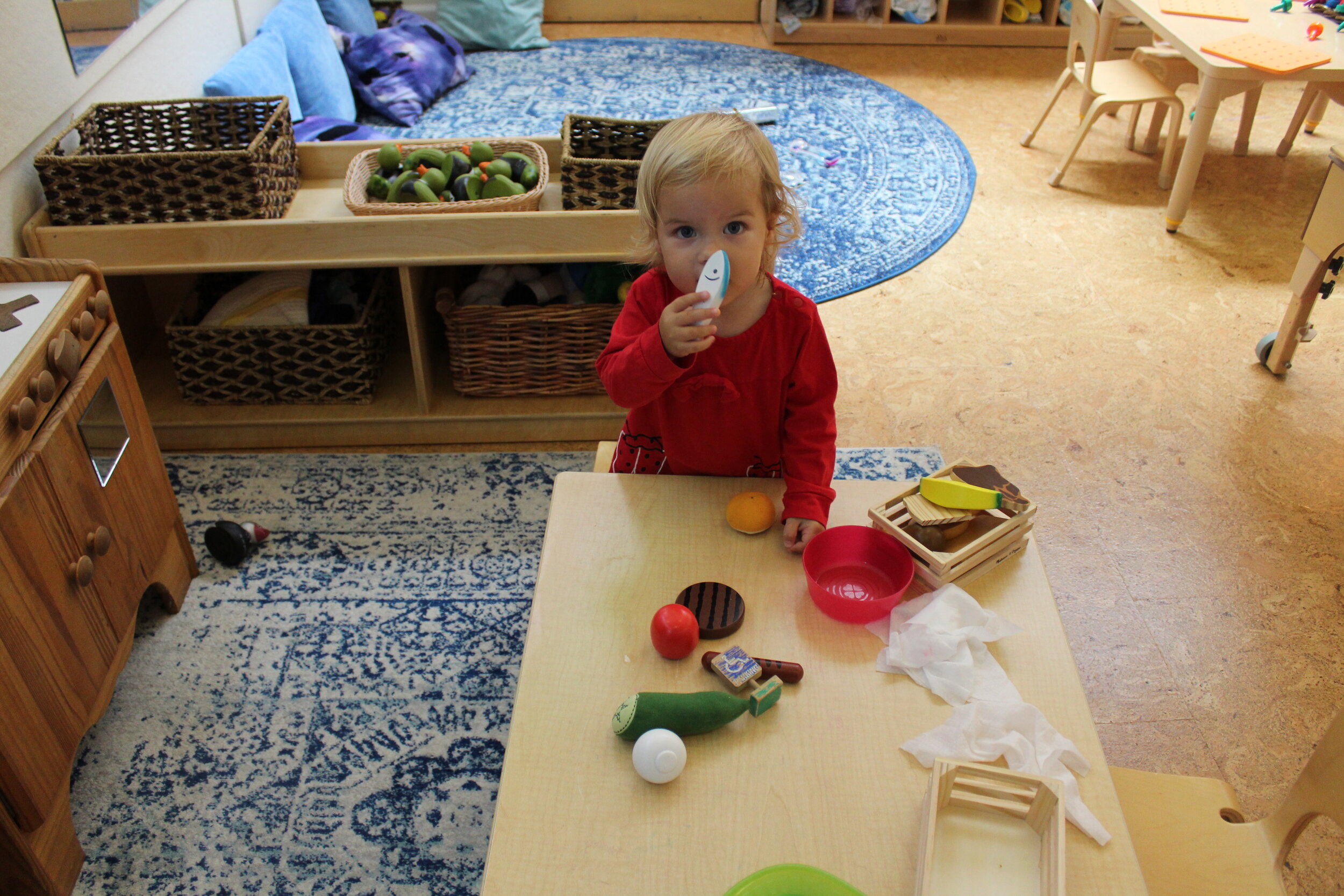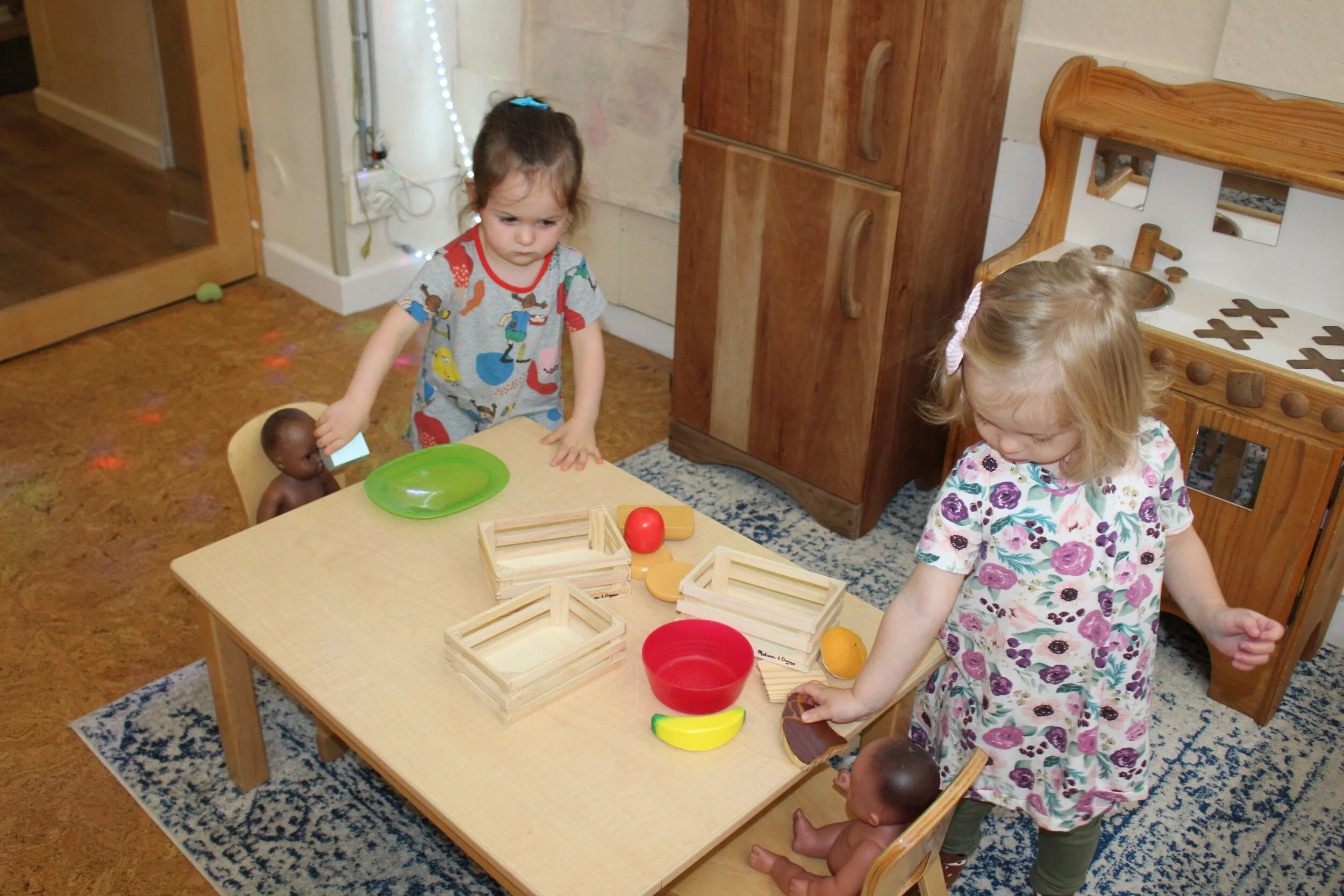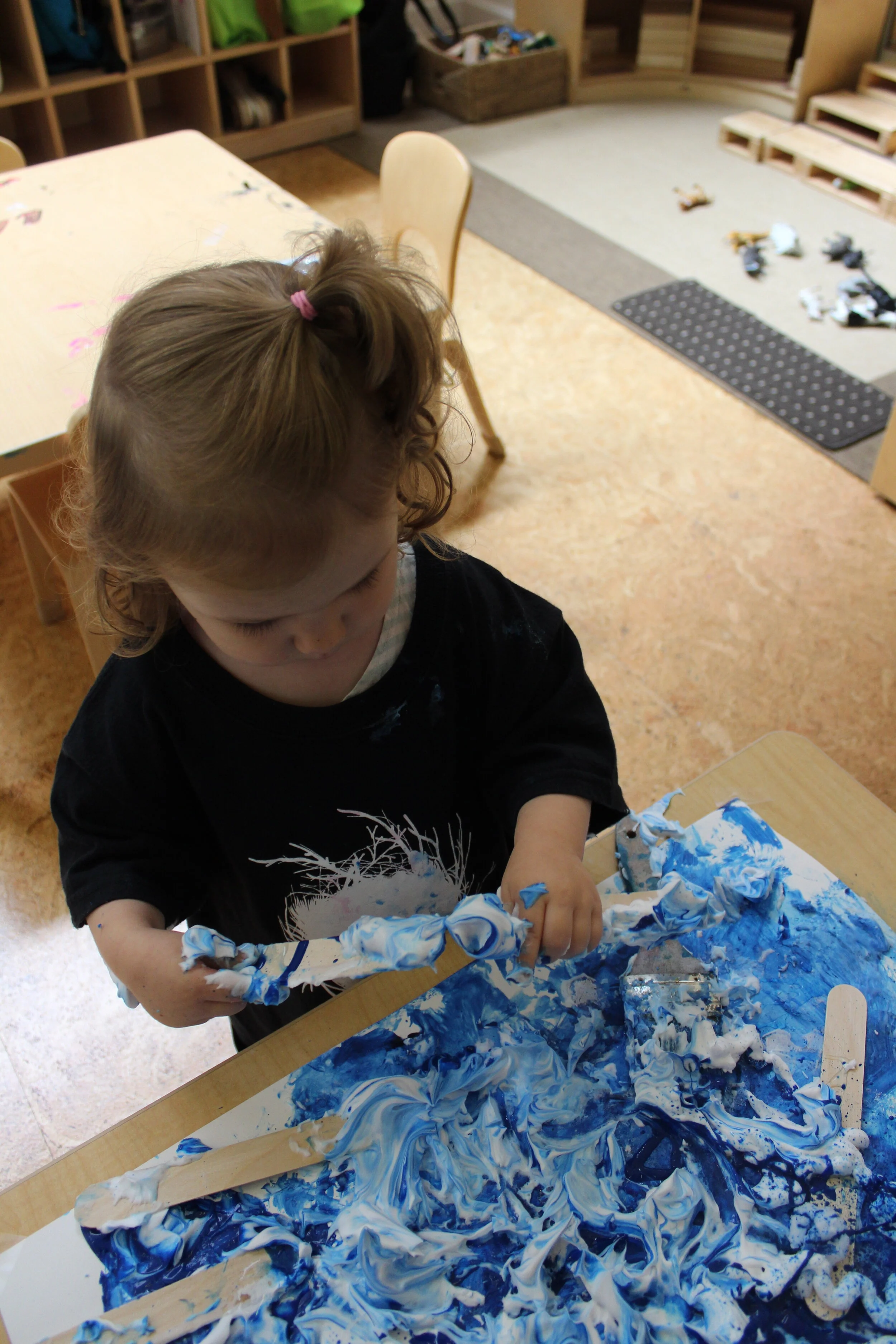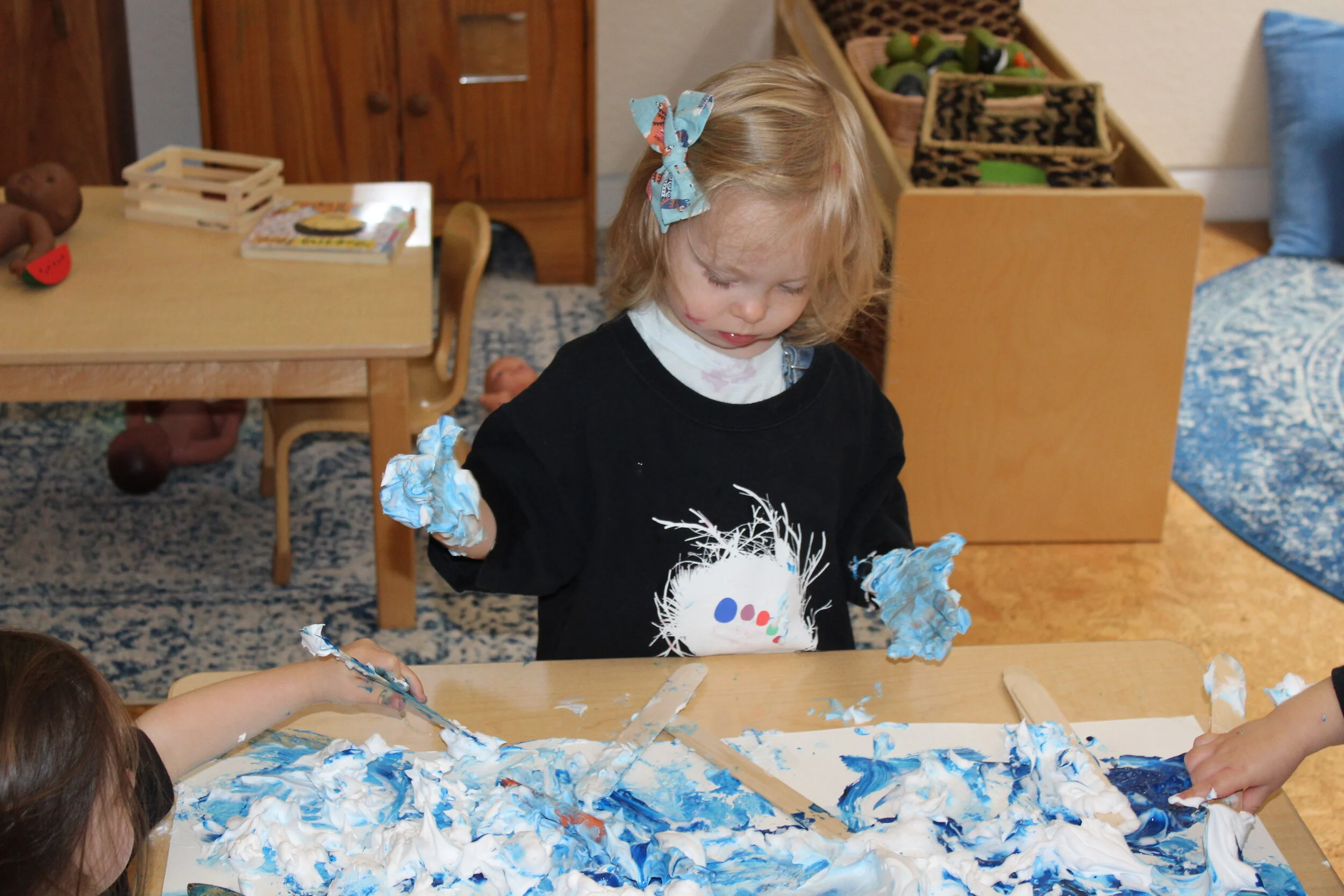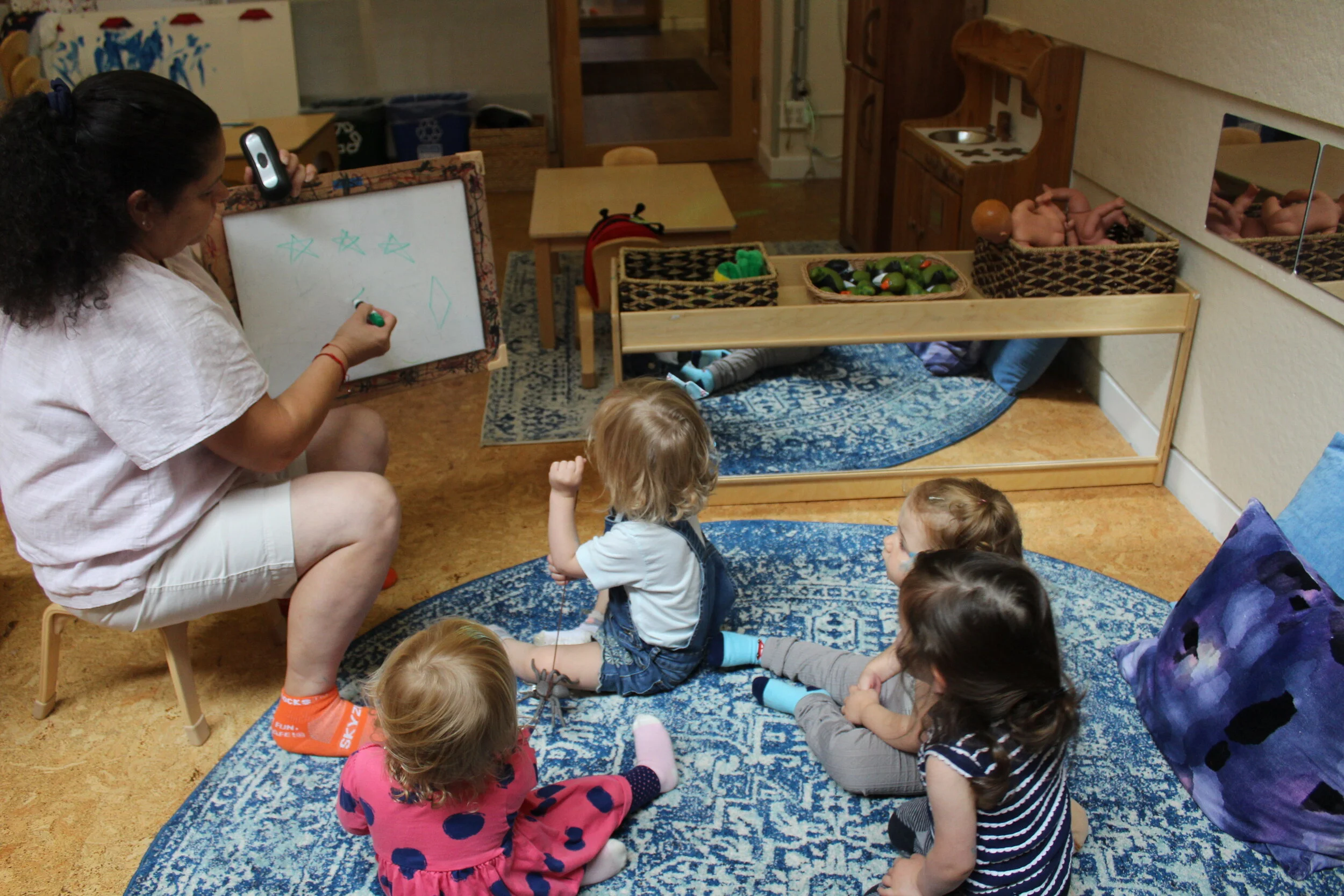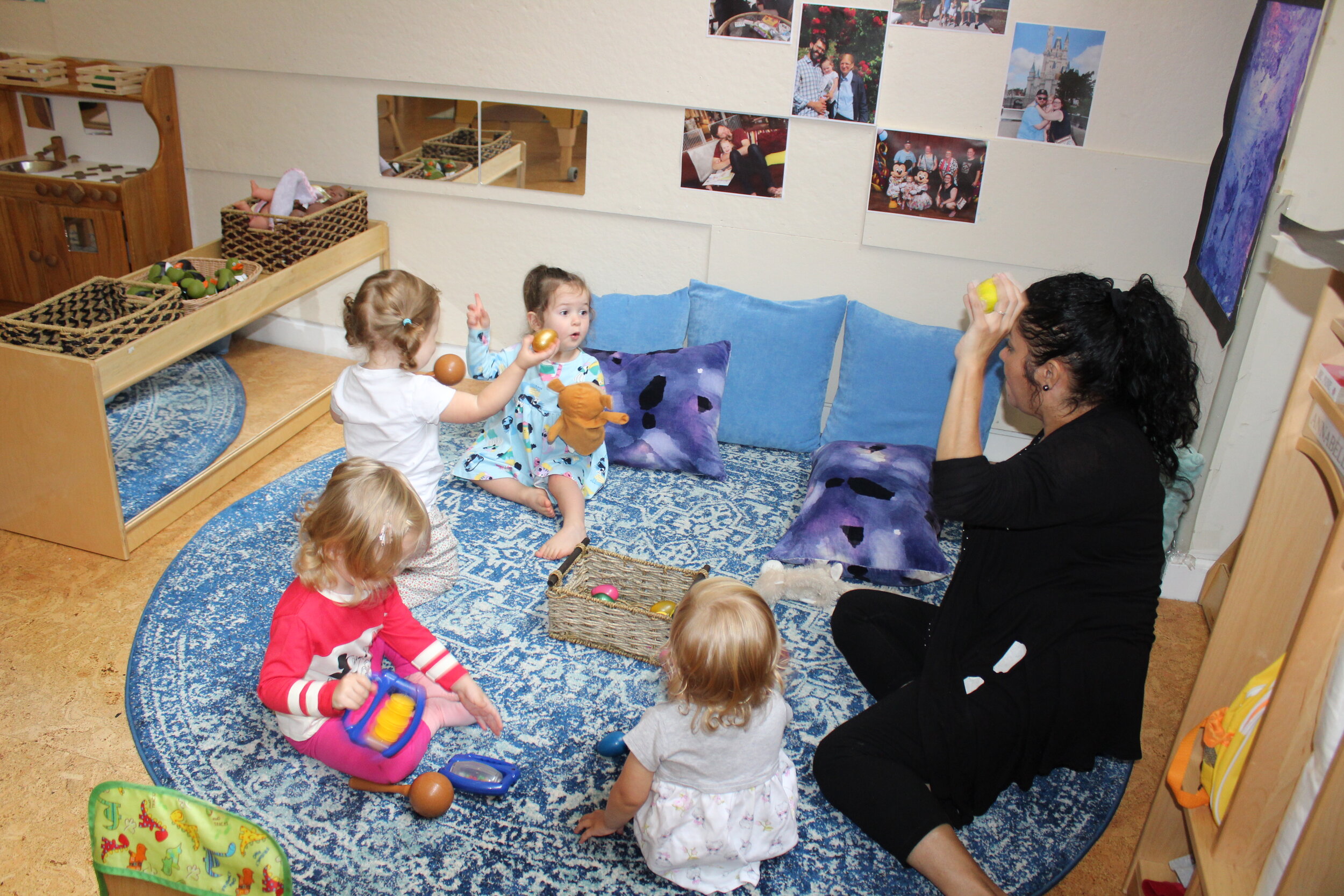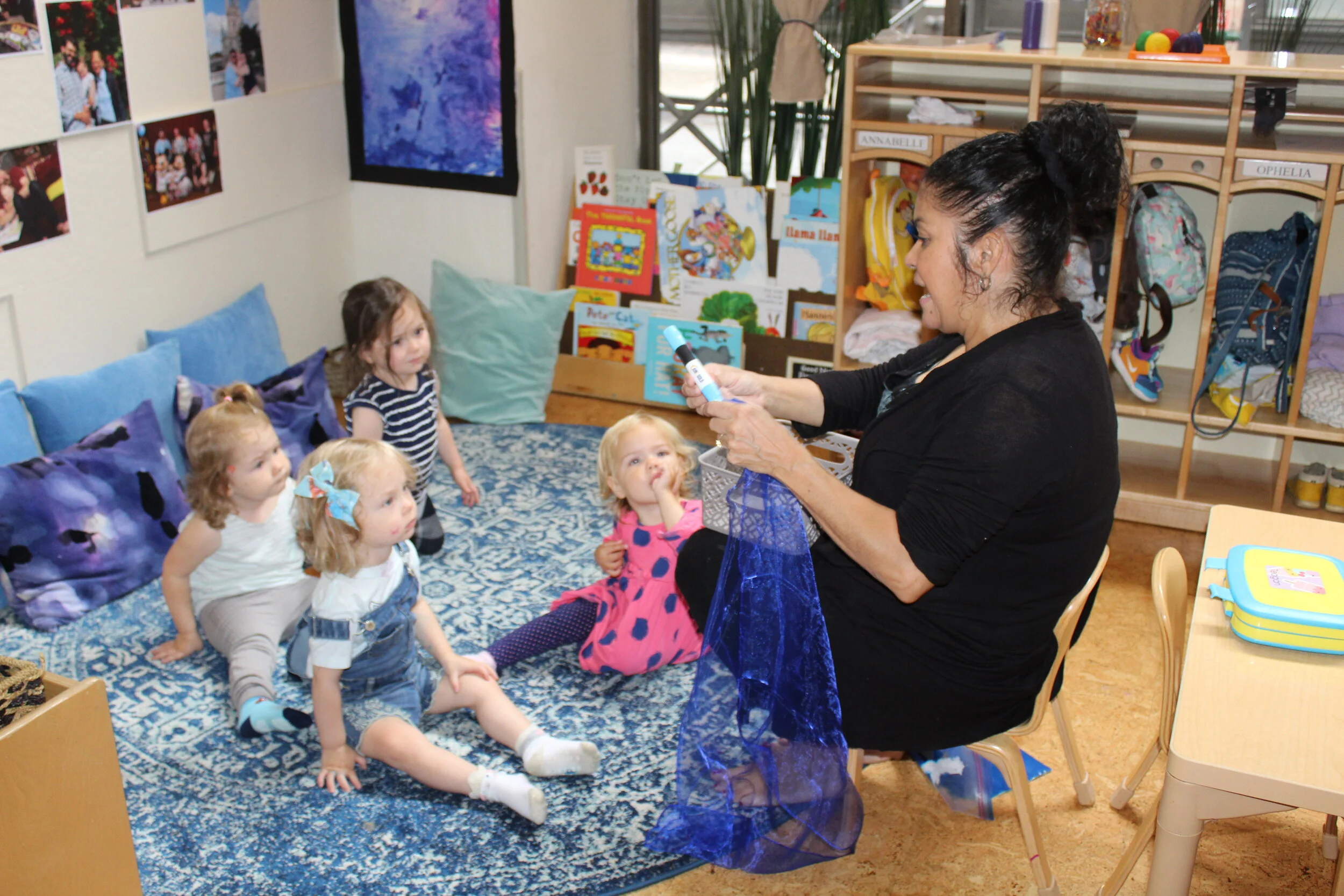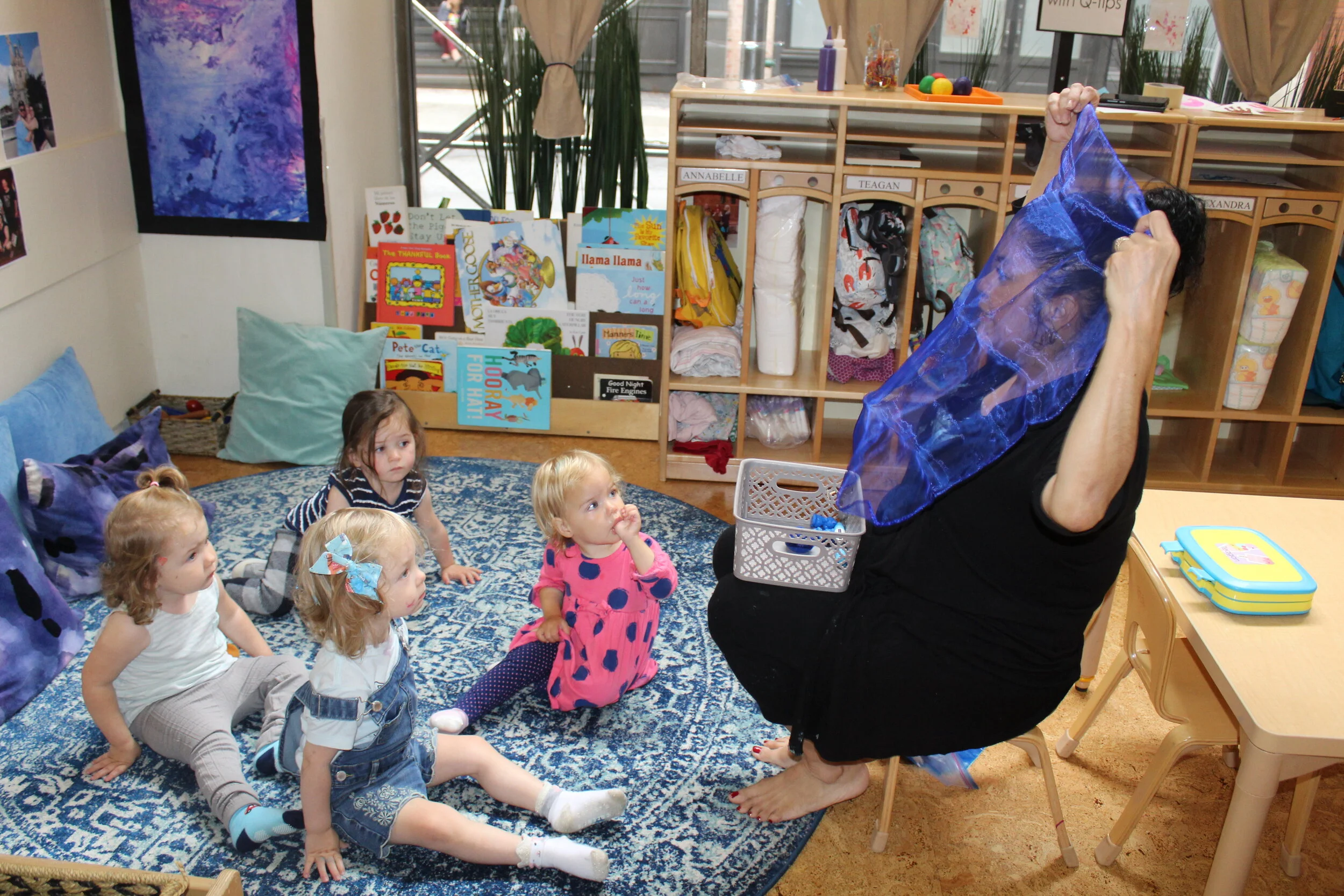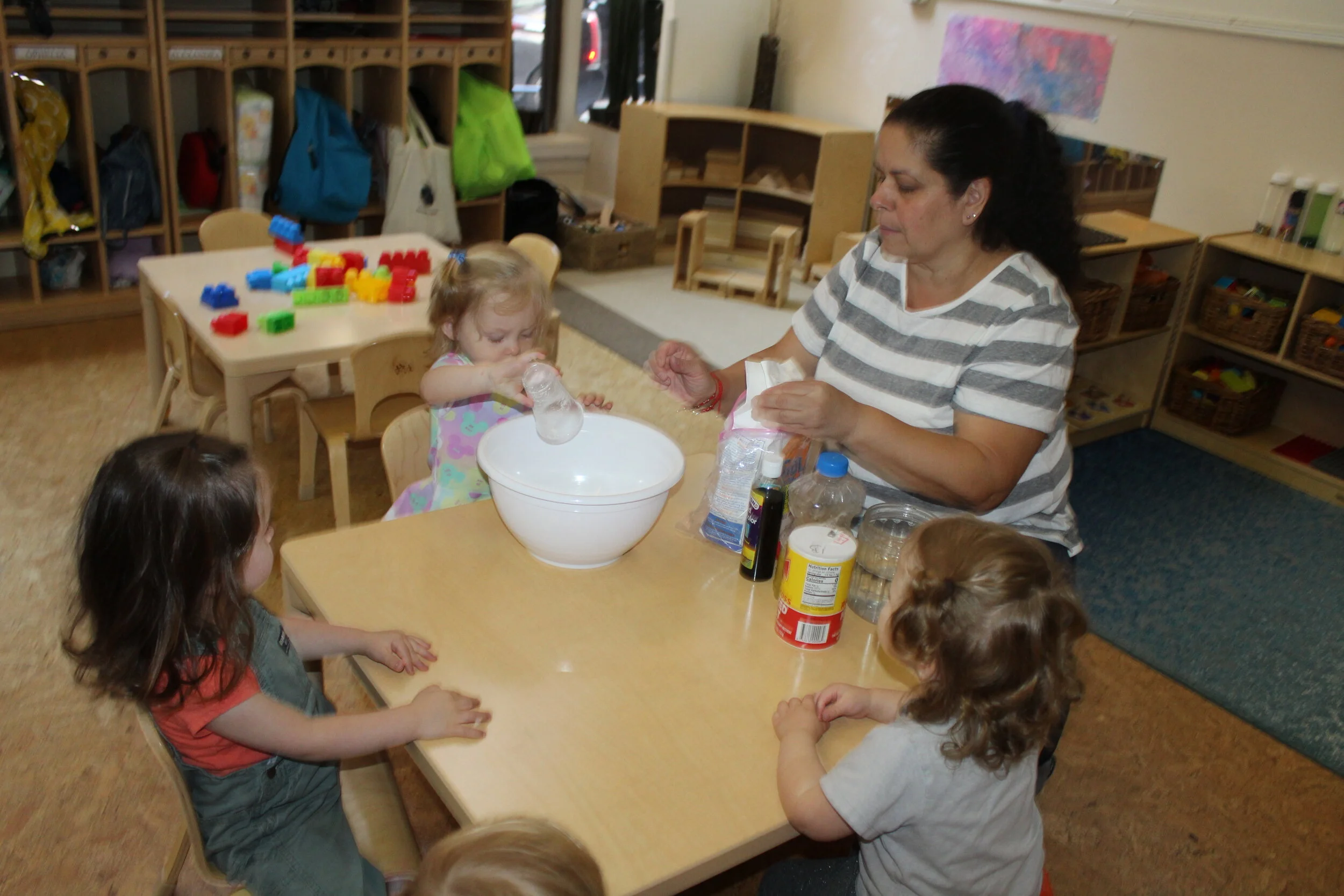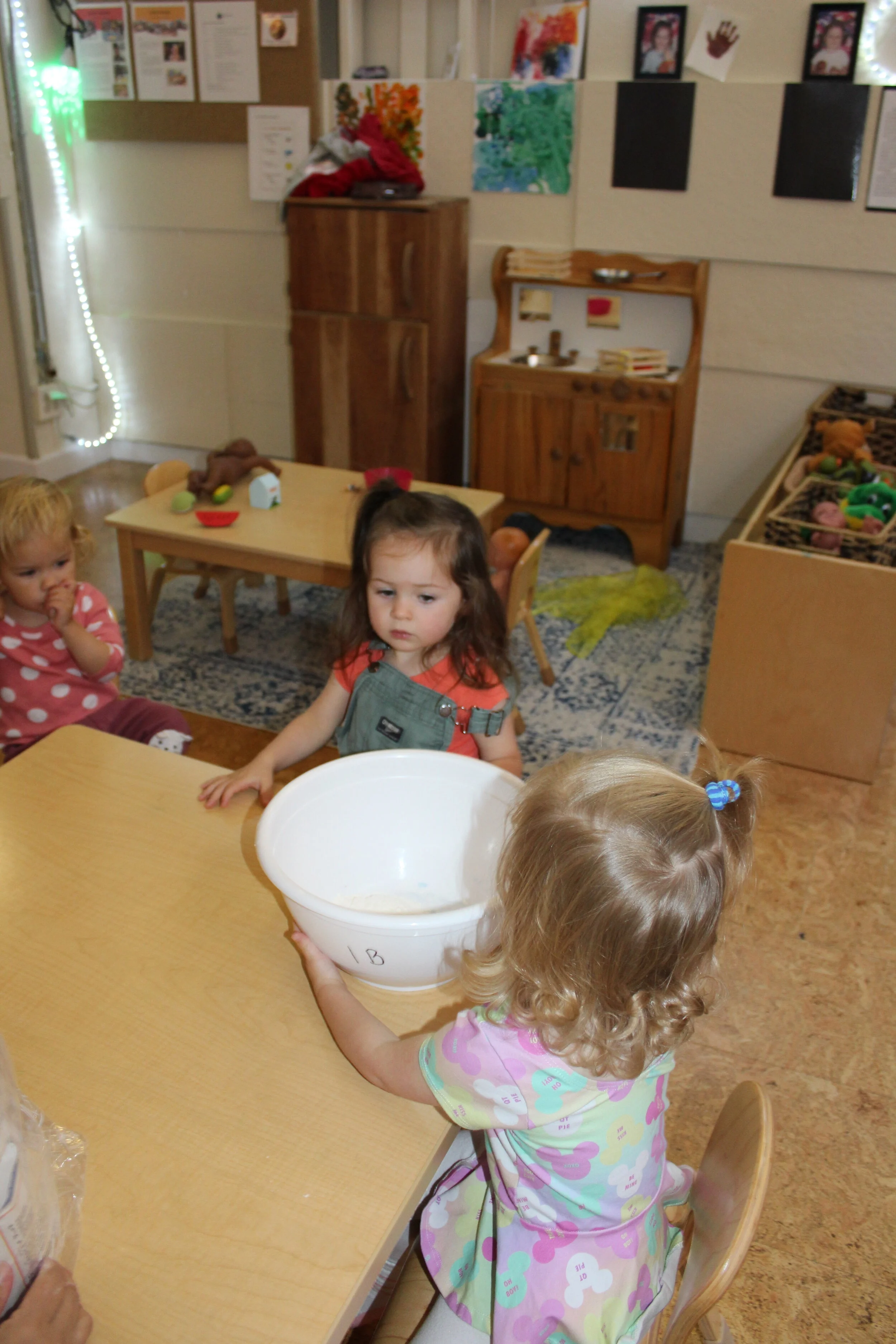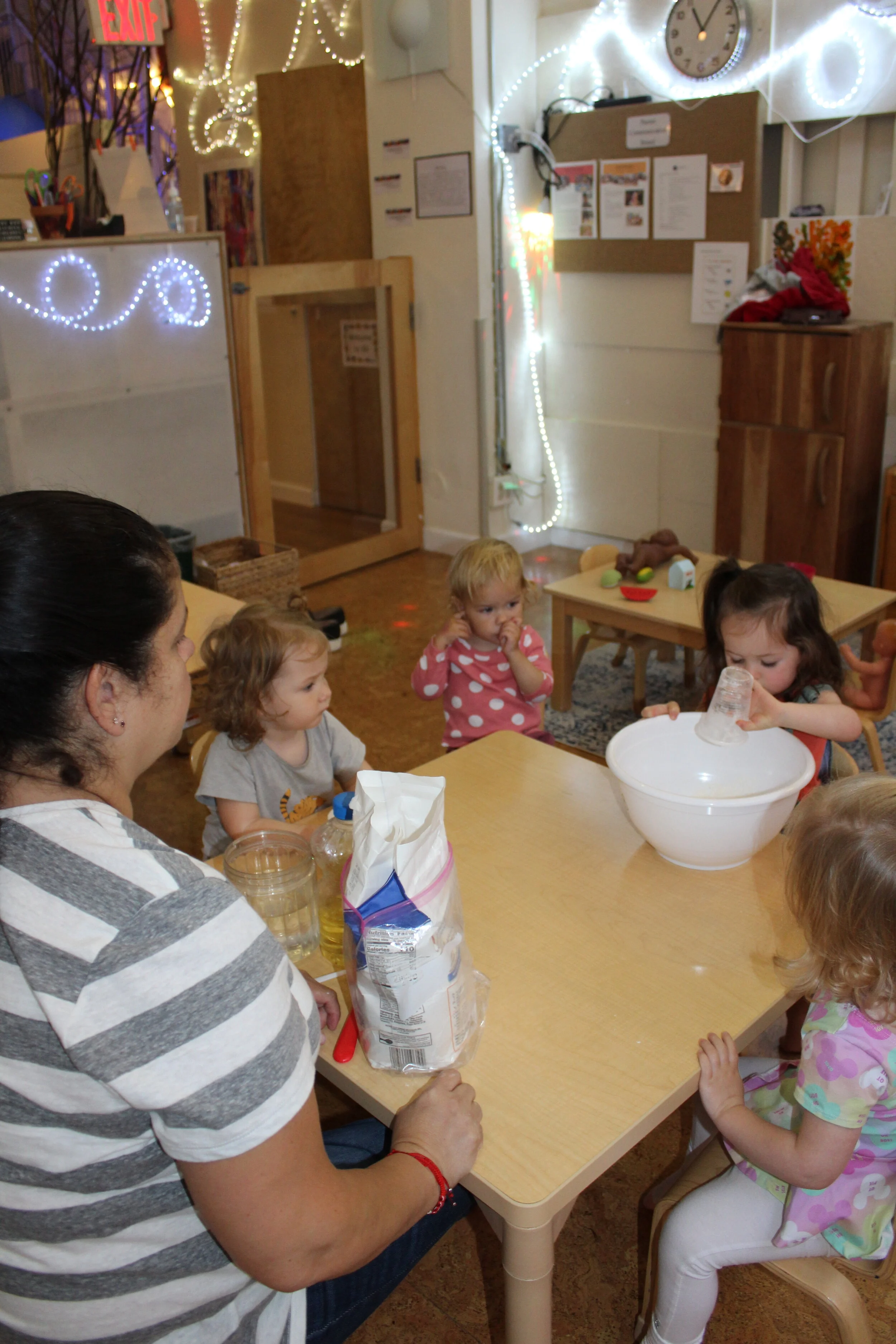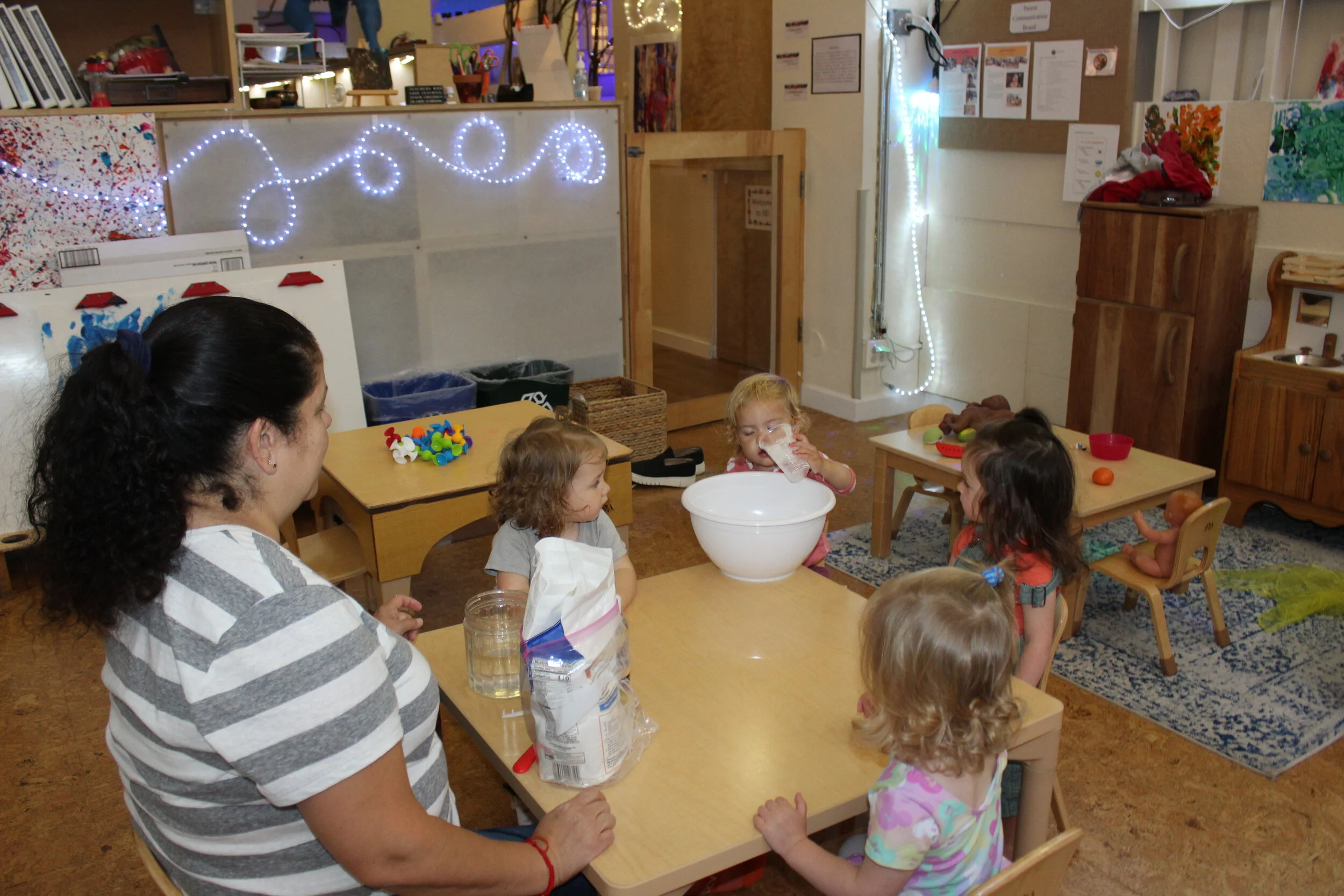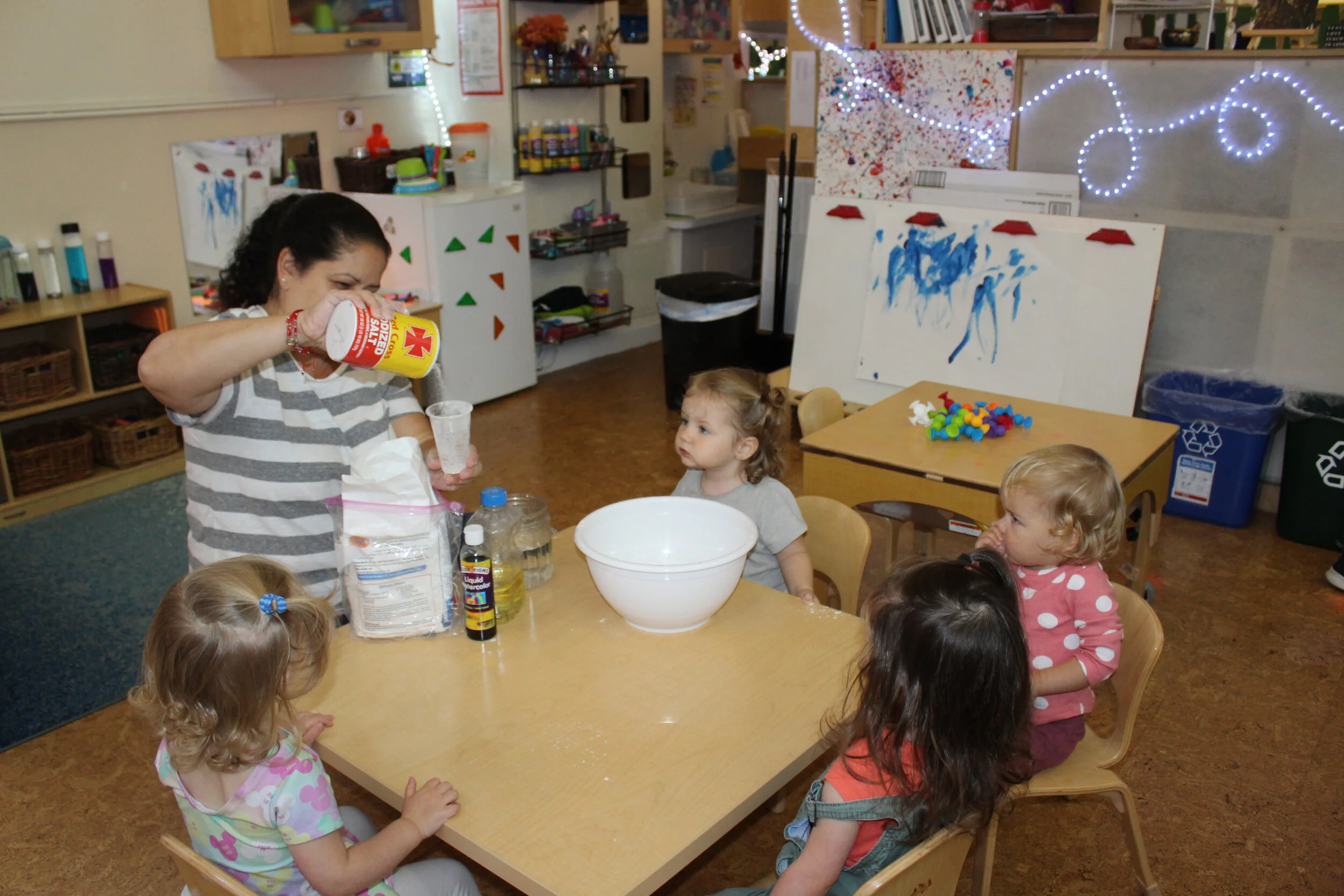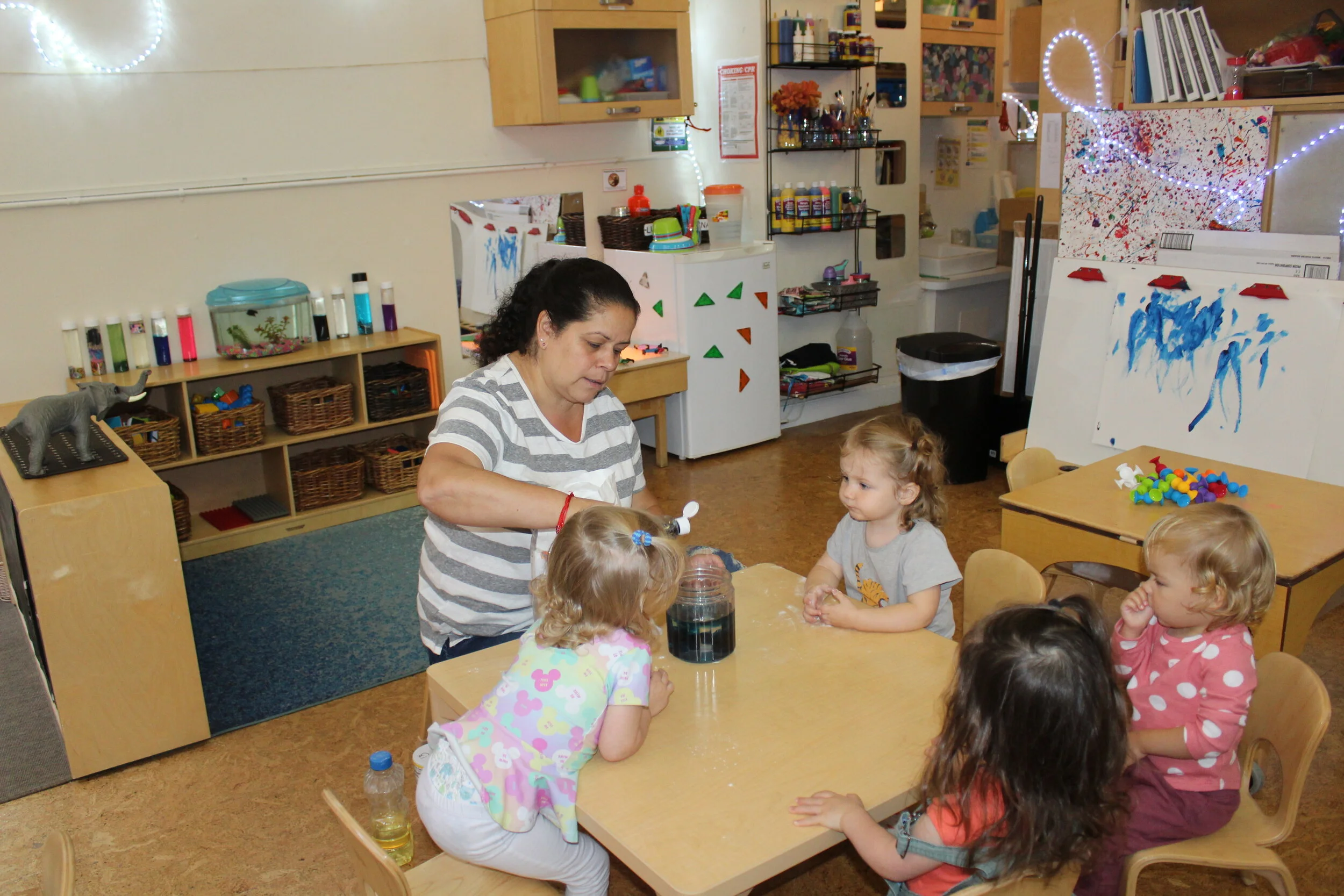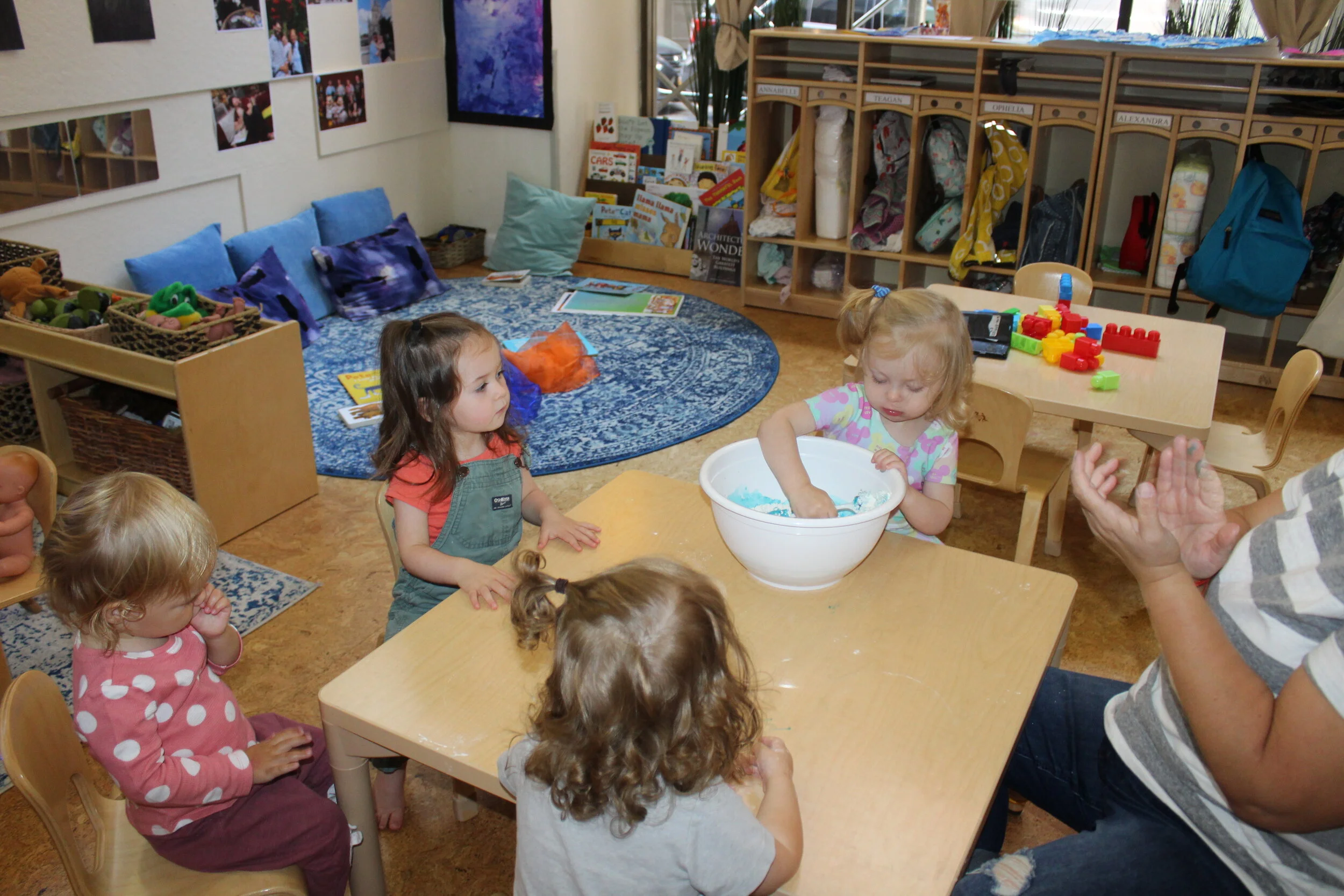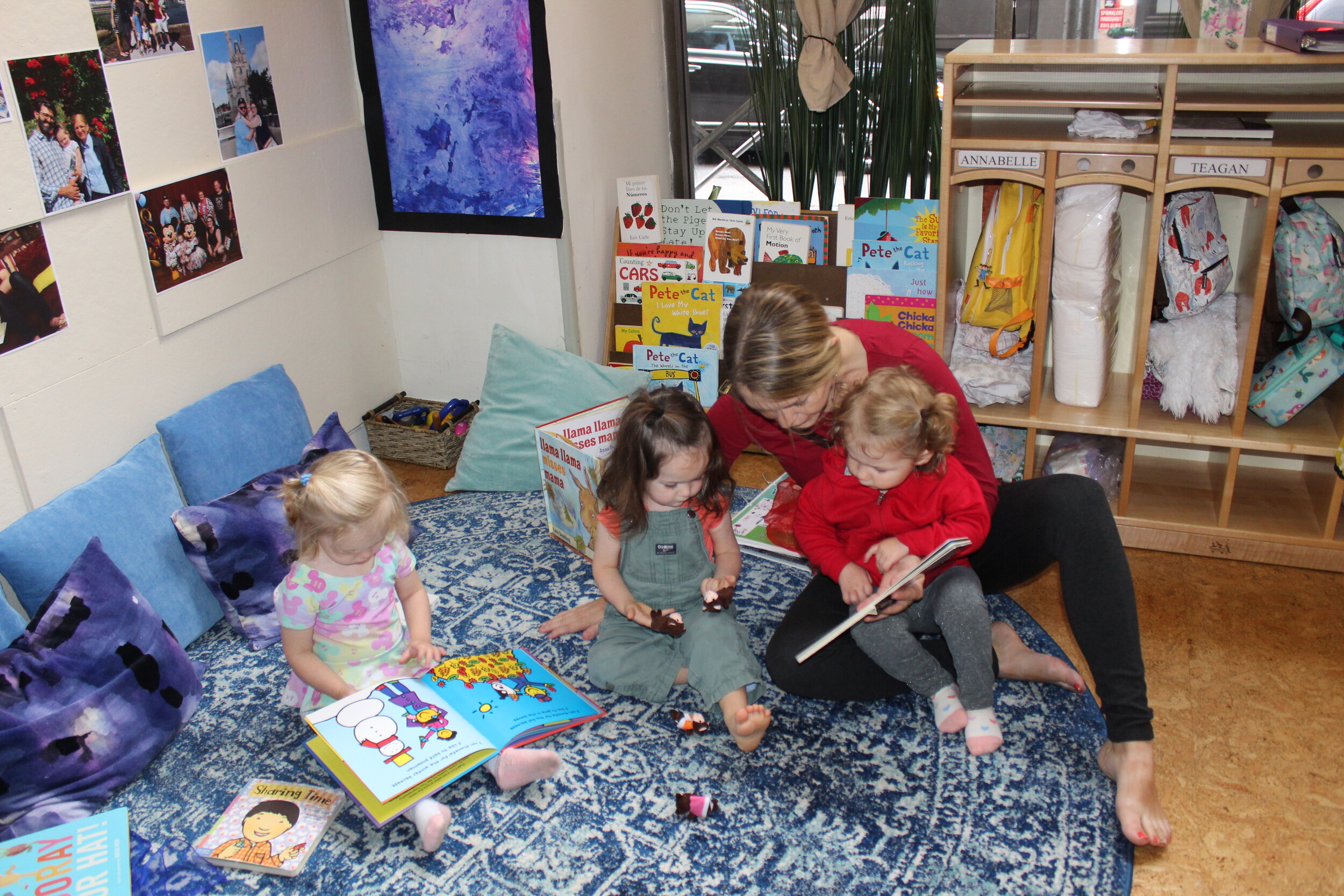The students learn through different interactions and as they engage with different materials. There’s no set time in which they will learn things. Toddler growth and development is very much an individual experience, with all toddlers progressing at their own pace. Toddler years are not only about physical growth but mental growth as well.
We read and sing a variety of books each day:
Mama, Mama Misses Mama
Brown, Brown Bear What Do You See
The Wheels on the Bus
The Five Speckled Frogs
Nursery Rhymes
Hooray for Hats
Pete the Cat, I Love My White Shoes
Pete the Cat, Rocking in My School Shoes
Pete the Cat, The Wheels on the Bus
My First Day at Nursery School
Maisy Goes to Pre-School and many more….
Songs:
Good Morning Songs- “Hello How are you?
The Wheels on the Bus
Itsy Bitsy Spider (Spanish and English)
Five Little Speckled Frogs
Five Little Monkeys
Five Little Ducks
Watermelon
Twinkle, Twinkle Little Star
Where is Thumbkin?
If you are Happy and you know it Clap your Hands
ABC Song
Mr. Sun
We listened to Classical Music
We used finger puppets as we sang some songs
Baa Baa Black Sheep
We listened and sang Spanish songs
Old McDonald Had a Farm
I’m a Little Tea Pot
Jump in the Water….(We call each child’s name)
Highlights of the Week:
The children looked excited as the paint spread when they patted, touched, pressed, and rubbed the plastic. They focused on the movement of the colors. Their puzzlement allowed them to continue exploring. They appeared curious in how they were able to press and pat the plastic, and point to each color without getting some paint on their hands.
Exploring Tempera Paint: Art is the process of creating and experimenting. The soothing process of painting encourages children to generate different ways to explore painting. Each child chose a different color to paint. They patted the paintbrush lightly on the paper and instantaneously made more prominent movements by going side by side. A variety of muscle groups and physical and mental skills, including strength, dexterity, vision, and motor planning- the ability of the brain to organize and carry out movements, are developing in young toddlers. As they grip the tool, they will have enough control to create artistic masterpieces, using different strokes. Early art usually focuses on using the senses to explore, rather than creating a picture or object to keep. Young toddlers are merely enjoying the pleasure of creating and exploring the materials. As they investigate, they learn what happens when they move their hands and arms. Painting is a sensory stimulation that invites children to investigate and discover the world of texture and color.
Painting with Q-tips: This two-day process, the children experience a different kind of painting. There were five different colors, and each child independently articulated or pointed to three colors of their choice. Both sides of the paper have their distinctive dots, lines, and style of painting. Their artwork is display in the classroom.
Handprint Activity: All handprints are distinctive, and different in size, which builds upon identity and differences. It creates one person, "Me." The children selected the color for their handprint activity and once covered with paint; they gently stamped their hand down onto the paper and made an imprint of their hand. These prints, with their picture, are displayed in the classroom.
Kitchen Center: Pretend play is a form of symbolic play where children use objects, actions, or ideas to represent other objects, actions, or ideas using their imaginations. When your child engages in pretend (or dramatic) play, he/she is actively experimenting with the social and emotional roles of life.
Young children learn by imagining and doing. Have you ever watched your child pick hop a Lego across the table as if it were a person or a bunny? Your child is using an object to represent something else while giving it action and motion. The process of pretending builds skills in many essential developmental areas: social and emotional skills, language, and thinking skills.
During the week, the children explored different centers and activities:
Paint:
Mirror Painting: The goal of arts and crafts is to hone their creativity and to allow their imagination to run free. It gives children the opportunity to explore the world around them and see how things work. The open-ended art activities are all about the process. The concept “Process Art” applies to young children because it’s how children learn, allows them to be themselves, make their own decision, and most importantly, create! This fun activity helps children to experience a different form of painting on paper. It allows them to explore, experiment, and discover that the composition of paint appears differently on each surface they paint on. Mirror paper makes the painting shimmer, and the metallic exterior creates a shiny and slippery appearance. Each child projected different strokes on the mirror using paintbrushes and their hands. As they see their reflection, they also see the different strokes they have painted.
Exploring Blue paint, Shaving Cream and Glue
Shaving cream is great for sensory exploration and provides endless opportunities for children to play and discover. Sensory play promotes many experiences:
Sensory play encourages children to manipulate and mold materials, building up their fine motor skills and coordination
Is unstructured, open-ended
Encourages imagination and creative play
Develop social skills (taking turns and sharing materials)
Language development (experimenting with language and descriptive words )
Circle Time
We do different activities during circle time: Sing songs with musical instruments, finger puppets, and use an erasable board to draw the pictures of a song. For example, Janet drew a sun, spider, and spout for the Itsy, Bitsy Spider song and stars and a diamond for Twinkle, Twinkle Little Star.
Sensory
Play dough is a hands-on activity that provides enjoyable and satisfying experiences. It promotes language, creativity, cognitive, social, and emotional development. It is also a great activity for fine motor development. Playing with and pounding on play dough can offer young children a healthy and safe outlet for releasing extra energy. They squish, poke, pat, pull and flatten their dough. Play dough is also a scientific concept that involves the mixture of different components (flour, water, salt, and watercolor (optional) that produce the play dough to change its form. It stimulates the children's senses while offering an opportunity to use their imagination to explore. They each had a turn pouring and mixing the flour.
A smooth transition into a school environment is essential to ensure the child gets the best possible start in their new setting and gain a level of understanding about the changes that are about to take place. Implementing a smooth transition to school is also vital for children’s social and emotional development. The children appear to enjoy the reading session with Alexandra’s Nanny, Ophelia’s mother, Liselott, and Annabelle’s mother, Carly. Arranging a routine and creating some familiarity helps prepare the child for his/her day at school.

